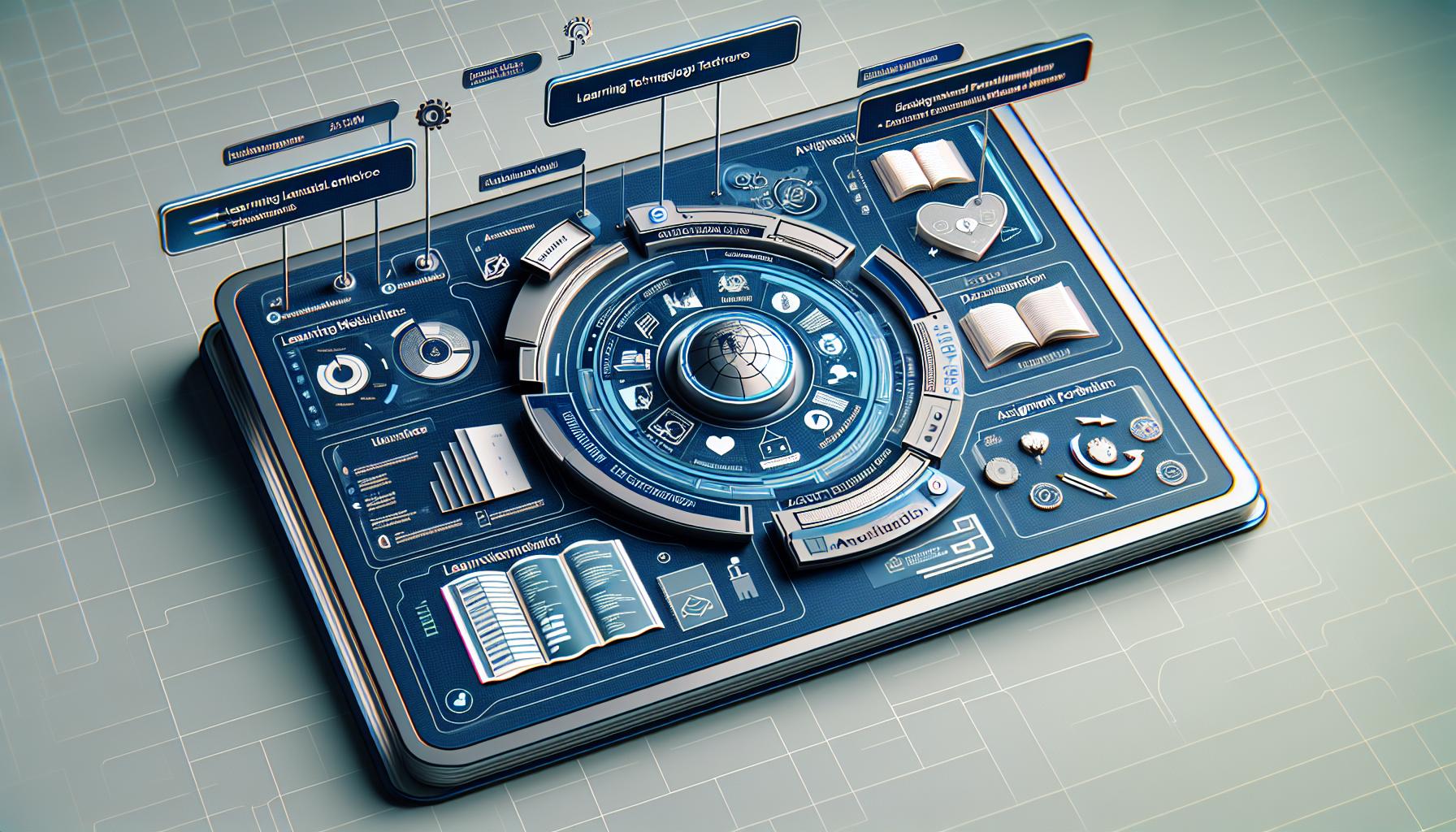Exploring Cheating Detection: Can Canvas Identify ChatGPT Usage?
Lately, I’ve been getting a lot of questions about whether Canvas can detect ChatGPT. It’s a hot topic in the world of online education, and I’m here to shed some light on it.
ChatGPT, developed by OpenAI, is a cutting-edge language model that’s raising eyebrows in the ed-tech sector. Can it be used to cheat on Canvas, the popular learning management system? Or does Canvas have the technology to detect its use? Let’s dive into the details and find out.
I’ll be using my years of experience in the tech industry to give you an in-depth look at this issue. Stay tuned as we explore the capabilities of both Canvas and ChatGPT.
PowerBrain AI Chat App powered by ChatGPT & GPT-4
Download iOS: AI Chat
Download Android: AI Chat
Read more on our post about ChatGPT Apps & AI Chat App
Key Takeaways
- Canvas, known for its global popularity, is a comprehensive Learning Management System that effectively merges education with technology. It’s not limited to merely presenting and grading assignments but allows for collaborative tools, video-based learning, custom-based learning paths, and an engaging online community.
- While Canvas is designed to identify any anomalous student behavior promptly, its efficacy can vary based on individual security measures of the Canvas-set environment in different institutions.
- ChatGPT, developed by OpenAI, is a modern-day marvel in AI language models, adept at generating human-like text in response to input. However, it does not comprehend text humans do, but it’s highly proficient at predicting the logically following text, imitating an intelligent conversation.
- Currently, Canvas does not possess an explicit mechanism to identify and block content generated by AI models like ChatGPT, primarily because AI-generated content closely mimics human writing style, making it challenging to differentiate the two.
- While plagiarism detection tools can catch directly copied content, they cannot definitively segregate AI-derived content from authentic student work.
- Methods for detecting cheating often mix advanced software, manual review, and statistical analysis but aren’t 100% foolproof, especially against evolved ways of cheating with AI language generators such as ChatGPT. A combination of traditional and technological strategies could lead to a more robust detection system.
- As technology progresses quickly, the future holds immense potential for the development of advanced capabilities in systems like Canvas.
Exploring Canvas Technology

Stepping into a high-level view of Canvas Technology, it’s a powerful Learning Management System utilized by schools, colleges, and companies globally. Integrating this online tool within an educational system or business setup enables effortless management, delivery, and evaluation of learning resources. It offers outstanding interoperability with other popular learning tools, creating a versatile learner-focused platform.
Diving a little deeper, Canvas’s perspective lies in its smart and modern design. The system’s functionality extends beyond merely providing and grading assignments. It facilitates collaborative tools, video-based learning, custom-based learning paths, and a vibrant online community. By leveraging these features, educators can adapt to modern teaching methods tailored to meet learners’ unique needs.
Driving down to technical specifics, Canvas operates as a web-based application. It’s developed on Ruby on Rails – a contemporary, open-source web development framework. Moreover, it takes full advantage of cloud computing services like Amazon S3, providing scalability, reliability, and enhanced performance.
The technology swifts to meet ever-developing security standards. This Learning Management System does not only ensure data encryption but also conducts frequent third-party independent audits. Upholding these robust security practices, Canvas instills confidence in its users regarding data protection and privacy.
Before we drift away, let’s look into its ability to detect unusual activities in the platform accurately. Technically, Canvas can pick up anomalies in students’ activity, such as quick, repeated clicks or abnormal browsing patterns – all thanks to its detailed access reports and analytics. Yet, it’s important to remember that each Canvas-set environment may have varying degrees of security measures. Hence, the effectiveness of anomaly detection varies accordingly.
Understanding ChatGPT
ChatGPT is a fascinating phenomenon in the realm of artificial intelligence (AI). Built by OpenAI, it’s a language prediction model influencing all sorts of online spaces. Its primary role? To generate human-like text based on the input it receives. ChatGPT has wide and varied uses, from drafting emails to writing code and even simulating a real conversation.
The technology behind ChatGPT is rooted in a model called GPT-3, or Generative Pretrained Transformer 3. GPT-3 is the third version of this model and boasts around 175 billion machine-learning parameters. It’s a prime example of a state-of-the-art AI language model. GPT-3 learns from vast amounts of text data, and it’s capable of imitating human writing with astonishing realism.
Read more about ChatGPT
Can schools detect ChatGPT?
Can Turnitin detect ChatGPT?
Chat GPT no restrictions
Connect ChatGPT to internet
Chat GPT no login
ChatGPT is all about context. Provide it with a prompt, and it’ll spit out a relevant response based on what it has learned in its training process. It’s about more than just keyword recognition. ChatGPT’s success resides in its ability to understand, respond, and engage in accordance with the context it’s been given. It analyzes sentence structure and content to produce a response that aligns with the user’s input.
However, it’s crucial to remember that ChatGPT doesn’t truly comprehend text in the way humans do. Rather, it’s exceptionally skilled at predicting what text should logically appear next, leading to intelligent-looking responses. For the end user, it often appears as if the program understands and interacts in a conversation. Still, it’s only emulating this behavior based on its extensive training.
But can Canvas detect the use of ChatGPT? It’s a question that many users have pondered. The following sections will delve deeper into this query and assist you in understanding the relationship between these two powerful tools.
Can Canvas Detect ChatGPT?
To clarify, it’s essential to understand that Canvas is designed with a suite of useful tools and features. From easy content uploading and distribution to enabling collaborative teamwork – it’s all there. However, one thing that often sparks curiosity is its capacity to perceive unconventional input, primarily when considering tools like ChatGPT.
Let’s define the term “detect.” If we’re discussing Canvas’s ability to identify and block ChatGPT-generated text, then it’s already a tricky question. As of my knowledge and based on currently available data, Canvas doesn’t have such explicit detection systems.
Remember, ChatGPT generates human-like text responses based on context and language patterns. This is—it creates text that closely mimics a human’s natural writing style. Hence, differentiating between human-produced text and AI-generated content becomes a complex task. And as far as I am aware, Canvas doesn’t hold a unique mechanism to identify this differential.
To add another layer, even if Canvas were equipped with AI-trained detection algorithms, there is a chance that these could lead to false positive hits. This is because such systems could misinterpret legitimate student work as AI-derived, given the already-existing variability in individual writing styles.
If we discuss plagiarism detection tools, they operate by analyzing the submitted text and comparing it to a vast database of content. They can potentially catch direct repetitions from existing work but cannot conclusively segregate AI-generated content from an authentic student’s work.
So, to answer the question if Canvas can detect ChatGPT—in the strictest sense of pattern identification and blocking—the answer tilts towards a no. Here, we must also acknowledge that technology is evolving at a rapid pace, and future development may revolutionize Canvas’s capabilities. But, until then, understanding the interaction between these two potent tools remains an interesting discussion.
Methods for Detecting Cheating

Given the prevalence of technologically-assisted dishonesty, it’s crucial to consider techniques to identify and prevent unscrupulous actions. A variety of methods exist for isolating dishonesty, including advanced software, manual review, and statistical analysis of student work.
Advanced software has always been at the forefront of exposure to curb cheating. Plagiarism detectors like Turnitin and grammar-checking tools like Grammarly offer exceptional detecting abilities. They can identify copy-pasted text from online sources with a high rate of accuracy. These technologies aren’t foolproof, though – they can spot blatant dishonesty but struggle to detect more advanced methods of cheating, like using AI language generators such as ChatGPT.
On the other hand, manual review is a time-proven, traditional method. Teachers and professors scrutinize assignments for inconsistencies in writing style, unusual phrasing, or knowledge beyond the student’s level. It’s an effective strategy, albeit time-consuming and subjective in nature.
Lastly, statistical analysis introduces a more quantified approach. By assessing the students’ writing style, time taken to complete an assignment, and looking for unusual patterns, we can flag potential cheating incidents. This technique may seem powerful, but it’s fraught with risks – receiving too many false positives or misidentifying innocent students can lead to distrust and unjust accusations. A balance must be struck to assure its fairness.
Acknowledging these methods illuminates an important reality: detecting cheating is complex. No current method is 100% fail-proof, especially in the face of advanced technologies such as AI. A multimodal approach could be needed, merging traditional and technological strategies to create a robust, diverse detection system. It’s not a solution but rather a potential path forward. We might not know if Canvas can detect ChatGPT yet, but such considerations could serve as crucial stepping stones toward combatting this looming challenge.
Conclusion
We’ve delved into the complex world of cheating detection. We’ve seen the limitations of tools such as Turnitin and Grammarly in identifying advanced AI-based cheating methods like ChatGPT. It’s clear that traditional approaches alone fall short in today’s tech-savvy world. A multimodal strategy that combines both traditional and technological methods is the need of the hour. While the task of detecting ChatGPT within Canvas is challenging, it’s not impossible. As technology evolves, so will our strategies to ensure academic integrity. The future of cheating detection lies in this evolution. Let’s rise to the challenge and create a fair academic environment for all.
What is the main topic of the article?
This article examines various methods for detecting cheating, especially technologically-assisted dishonesty, in academia and proposes a multimodal approach that combines traditional and technological techniques.
How can cheating be detected?
Cheating can be detected through various means like advanced software tools (Turnitin and Grammarly), manual review by teachers, and statistical analysis. However, these techniques have limitations, especially against advanced cheating methods like AI language generators.
What are the limitations of current cheating detection methods?
The current methods are less effective against sophisticated cheating means like AI language generators like ChatGPT. They fail to detect plagiarism effortlessly created by these advanced technologies.
What is a multimodal approach to cheating detection?
A multimodal approach blends traditional and technological strategies for a more effective cheating detection system. Such an approach better navigates the complexity of detecting cheating, especially those facilitated by AI.
What is the advantage of a multimodal approach?
The multimodal approach can potentially address challenging and sophisticated cheating, like those made possible by AI language generators within platforms like Canvas. It can combat the limitations of current detection methods by incorporating various techniques.
















